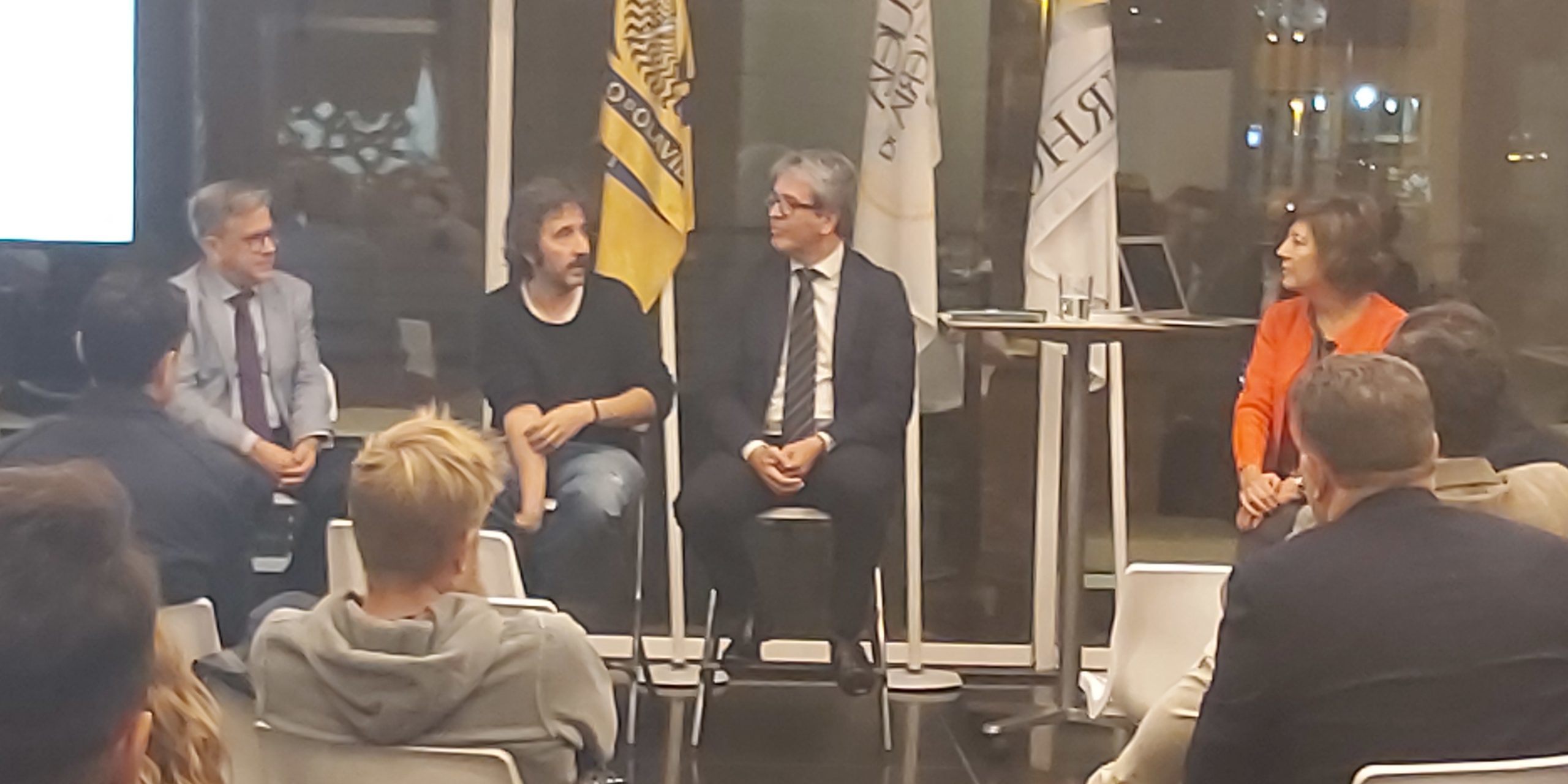Within the framework of the “Dialogues of Architecture and Gastronomy” by the Silestone Institute, Cosentino has organized a new session at the Hospitality School of Seville. Chef Diego Guerrero, the architect Víctor Moreno, founder of TrueTalk Tecnificación Inmobiliaria and the VP of Marketing and Communication of Cosentino Santiago Alfonso have been the participants on this occasion. The talk has been moderated by the journalist of Canal Sur TV Inés Romero.
For Víctor Moreno, gastronomy and architecture go hand in hand because both disciplines need the “precise touch of salt”, the balance, so that, both dishes and spaces have a good proportion, without being excessive. According to the architect, “in the kitchen chefs work with pleasure and architects work with illusion”
DSTAgE y Dspeakeasy: two very personal restaurant spaces
According to Diego Guerrero, who explains that he became chef by rebellion, DSTAgE and Dspeakeasy are very personal projects. The chef conceives his projects as places of destination where people go to see him and know his cuisine. DSTAgE it is such a personal project that all the interior design of the premises was carried out internally without the help of an architect or interior designer. In this sense, Santiago Alfonso explains that Diego and his team were very clear from the beginning about the colours, textures and formats of the surfaces they wanted for each room.
Innovation and sustainability, much more than a must have
For Víctor Moreno, “innovation is in the look and not so much in technology”. The architect advocates for building empowerment, in getting out of the conventional and addressing problems from another point of view. For him the architecture is recovering the value of the authentic. According to the architect, Switzerland, Japan and Spain are the countries where architects develop more functions.
Regarding sustainability, according to Diego Guerrero, a factor to consider in a restaurant is to see how we change the culture and customs and adapt them to current legislation. In this sense, combining opening hours with the work times of the staff, the comfort of the neighbors …, is not easy. Nor is is easy to avoid the use of non-polluting materials – plastics for example. “It is not impossible. There is a great awareness of change, ”says the chef.
For Santiago Alfonso, “the kitchen countertop is the hub of the whole house” from where, very soon, the household appliances will be managed. In this line, Cosentino is investigating two colors of translucent effect that could turn the countertop into a screen. The company is also working, in collaboration with the university, to achieve that the entire surface of the countertop can be used to cook. Likewise, Cosentino’s R&D department is developing more versatile, more hygienic and less absorbent surfaces.
